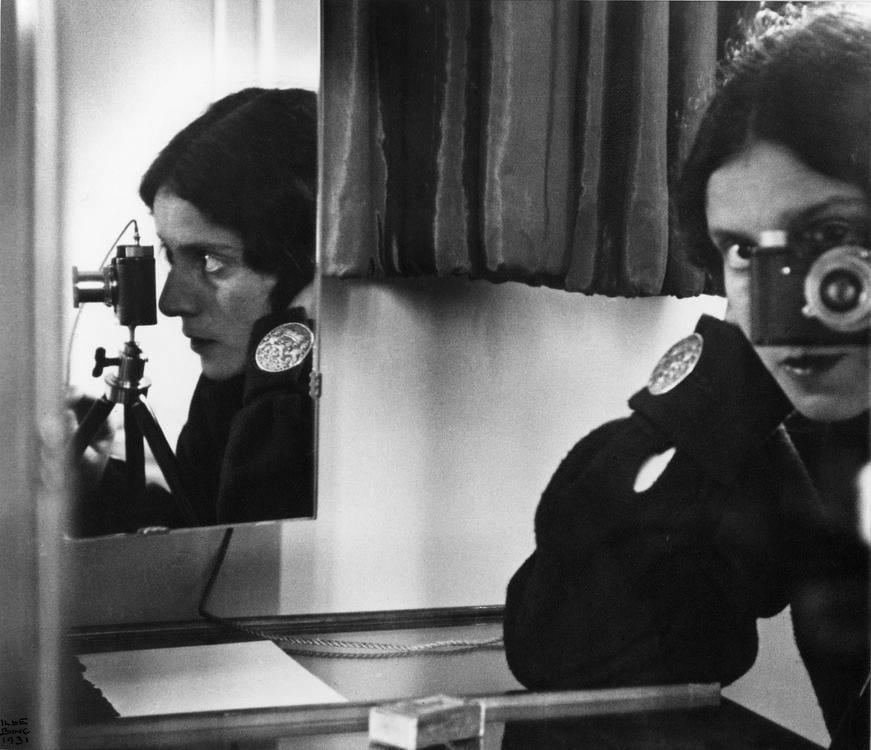Ilse Bing
Ilse Bing (1899–1998) was a pioneering German photographer whose innovative vision and technical mastery earned her the title “Queen of the Leica.” Born in Frankfurt to a family of textile merchants, she studied mathematics and physics before embracing photography in the late 1920s. In 1930 she moved to Paris, where she immersed herself in the avant‑garde milieu alongside Man Ray, László Moholy‑Nagy, and Henri Cartier‑Bresson.
Bing’s early work showcased a fearless blend of experimentation and precision. She mastered “straight‑photography” to capture the geometry of Parisian streets and the city’s bohemian spirit, while her solarisation experiments—flashing negatives during development—produced striking, otherworldly images that challenged conventional notions of light and shadow. Her range extended from rhythmically patterned architectural studies to sensuous portraits of dancers and markets, each framed with the dynamic angles the Leica made possible.
By 1936 Bing’s talents were recognized in France’s first contemporary‑art exhibition at the Louvre, and she contributed regularly to Harper’s Bazaar and Vogue. World War II forced her from Paris to internment in Marseille, but she reunited with her husband, Konrad Wolff, and in 1941 they emigrated to New York. There Bing documented street life, interiors, and portrait commissions throughout the 1940s, yet by the 1950s she turned increasingly to writing, drawing, and abstract relief work.
In 1976, after a seventeen‑year hiatus, Bing returned to photography with a solo show at New York’s Lee Witkin Gallery, reigniting critical interest in her oeuvre. Following her death in 1998, major institutions—including the Museum of Modern Art and the San Francisco Museum of Modern Art—acquired her estate, ensuring her legacy as a master of light, form, and invention. Throughout her life, Ilse Bing remained committed to photography’s capacity to reveal both the poetry of everyday existence and the transformative power of the medium itself.
Photography & Works
-

Ilse Bing
Baronne Van Zuylen Add to cart -

Ilse Bing
Chairs, Paris, Champs Elysses Add to cart -

Ilse Bing
Hot Dog Vendor, NYC Add to cart -

Ilse Bing
Last Bastille Day Before the War Add to cart -

Ilse Bing
Orchestra Pit, Theatre des Champs Elysees Add to cart -

Ilse Bing
Paris, 1934 Add to cart -

Ilse Bing
Patrice Avec Bateau Add to cart -

Ilse Bing
Pont des Arts, Paris Add to cart -

Ilse Bing
Rond Point de Champs Elysees, Paris Add to cart -

Ilse Bing
Stormy Sky Add to cart -

Ilse Bing
Street Scene From Above Add to cart



